Your cart is currently empty!
Best Climbing Gear 2023 – Expert's Picks for Best Rock Climbing Gear List
Views: 0
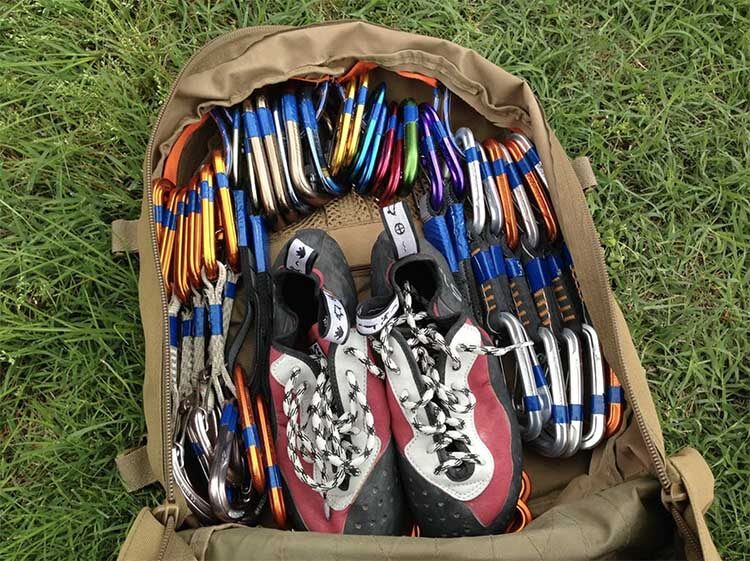
Whether you’re a seasoned trad climber or a new pebble wrestler, at some point, you’ll have to buy some new gear. Anyone who’s spent time out on the rock will tell you that most climbing disciplines are gear-intensive enterprises, so there’s no denying that you’ll need to spend some time, money, and energy to get the gear you need.Especially when it comes to a pursuit like climbing, however, you want to be certain that you’re getting the right gear. Since climbing gear can, quite literally, save your life, you don’t want to be messing around with sub-par gear.But, with so many different options to choose from in the world of climbing gear, how can you ever decide on just one piece of gear? The sheer number of choices you need to make when building a rack or choosing a new rope is enough to make anyone’s head spin.Thankfully, we’re here to help. To get you started on your path to building the best set of climbing gear you can imagine, we’ve put together this ultimate guide to climbing gear. We’ll start things off by walking you through the kind of climbing gear you need to have to enjoy your time out on the rock and even offer our suggestions for the best pick in each gear category.Then, we’ll give you some insight into the best climbing gear brands so you can feel confident in your choices. After that, we’ll give you some sample gear lists for climbers at different levels and for different climbing disciplines, so you can start to get some ideas of what you’ll need as you progress in your climbing career.
Finally, we’ll wrap it all up with some discussions about how to pack and organize your climbing gear, how to care for your gear, and how to mark it so you never get your gear confused with someone else’s. It’s quite a mouthful, but we’re excited to get started. Here we go!
Start here to get a basic understanding of the essential climbing gear you’ll need when you’re on the rock.
Learn more about the companies that make some of the best and most trusted gear on the market today.
Start building your rack with this step-by-step guide to climbing gear for different levels of climbers.
Each climbing discipline has its own gear needs – learn more about them here!
Be more efficient and more organized with our climbing gear packing tips.
Extend the lifetime of your gear by taking care of it using our essential guide to gear maintenance.
Learn when you should retire your climbing gear and when it’s okay to use.
Never lose your gear again! Get tips on how to mark your gear effectively.
There are no if, ands, or buts about it: climbing requires a lot of gear unless you’re planning on Alex Honnold-ing it and free soloing El Cap. Since we don’t really recommend that you go out and climb without protection, what we can do is recommend some of the best gear around to help you spend less time indoors on your computer and more time getting after it outside.
To get you started, we’ve created this list to the climbing gear you’ll need to have for your adventures. Although everyone’s individual needs are different, there are some basic things that all climbers will need. That’s where we come in.
We’ve put together a list of the climbing gear that pretty much any dedicated climber will need so you can get started. We’ll walk you through the different categories of gear, from climbing gear essentials to climbing clothing and accessories. For each individual item, we’ll give you some insight into the purpose of each piece of gear, what to look out for, and how much you can expect to spend. We’ll even give you our top pick in each category so you can get outside. Let’s get to it!
All of the items in this section of our climbing gear list are considered essential to the average climber. This includes things such as climbing shoes and a harness, but it’s important to note that some of this gear isn’t essential if you strictly boulder and might be more pertinent if you prefer to climb on a rope.
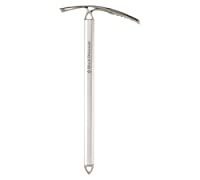
- PURPOSE: Self-arresting during sliding falls on snow
- ESSENTIAL ITEM?: Yes
- PRICE RANGE: $50 – $200
- LOOK FOR: The correct size, light weight, durability
- OUR PICK: Black Diamond Raven Pro
Although the following items aren’t critical to a climbing outing, they can help make your day much more enjoyable. These accessory items are very popular amongst climbers, so it’s good to consider adding them to your gear list.
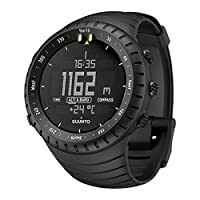
- PURPOSE: Keeping time, checking elevation on climbs
- ESSENTIAL ITEM?: No
- PRICE RANGE: $100 – $500
- LOOK FOR: Comfortable fit, desired features, long battery life
- OUR PICK: Suunto Core
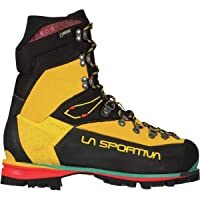
- PURPOSE: Alpine climbing, ice climbing
- ESSENTIAL ITEM?: Yes
- PRICE RANGE: $200 – $800
- LOOK FOR: Comfortable fit, good crampon/boot integration, durability
- OUR PICK: La Sportiva Nepal Evo GTX
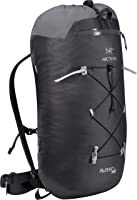
- PURPOSE: Carrying mountaineering gear
- ESSENTIAL ITEM?: Yes
- PRICE RANGE: $100 – $300
- LOOK FOR: Light weight, durability, gear attachment points, sizing
- OUR PICK: Arc’teryx Alpha FL 45

- PURPOSE: Brushing chalk and grime off of holds
- ESSENTIAL ITEM?: Yes
- PRICE RANGE: $5 – $15
- LOOK FOR: Durable handle, quality bristles
- OUR PICK: Sublime Slimline Climbing Brush
Although you can climb naked, we don’t really recommend it. The thought of shimmying up an off-width without pants on just sounds painful and like it should be avoided. That being said, while you can wear any old piece of clothing while climbing, when it comes to certain garments, it can be helpful to have gear that’s purpose-built.
Climbing is an inherently dangerous enterprise, which is why we head out into the mountains with oodles of safety gear to keep us protected in the vertical world. While some climbing protection is very discipline dependent (e.g. crash pads for bouldering), much of it can be used in nearly every kind of climbing. Here are some of the things you might need to protect yourself on the rock:

- PURPOSE: Protecting trad climbing routes
- ESSENTIAL ITEM?: Yes
- PRICE RANGE: $7 – $15 each
- LOOK FOR: Good size range, durable metal, quality wire system
- OUR PICK: DMM Wallnut
When you buy climbing gear, you want to be sure that you’re investing your hard-earned money in a brand that you trust. Since climbing gear can, quite literally, save your life, you don’t want to doubt the quality of your gear when you’re halfway up a pitch.
But with so many different gear companies out there, how do you know what companies are trustworthy and which to avoid? To help you out, we’ve compiled a list of our favorite climbing gear brands so you can be confident in your gear purchases. Here are some companies that churn out quality gear:
Black Diamond, in its earliest form, got its start in the back of legendary Yosemite climber, Yvon Chouinard’s, car in the 1950s. Chouinard had felt dissatisfied by the equipment available to him as much of the European-made gear of the time was either very expensive or just not up to snuff for the hard granite rock in Yosemite Valley. So, he got himself an anvil and a hammer and set out to create the best climbing gear around.
After years of selling pitons and other climbing hardware from Chouinard’s truck, the company that was then known as Chouinard Equipment, Ltd. soon became the Black Diamond Equipment that we know of today. While the company’s name has changed, however, the quality of their gear is still top-notch.
These days, Black Diamond still specializes in producing quality rock and ice climbing gear but has since branched out into other outdoor pursuits. Black Diamond currently offers, in addition to their climbing gear, a selection of ski gear, hiking equipment, packs, and clothing for alpine pursuits. Whether you need a new cam or a pair of ski pants, Black Diamond is your one-stop-shop for superb gear.
These days, Patagonia might be better known as the company that makes fleece jackets for Wall Street bankers, but their line of casual wear is just a side-gig for a company that was built by and for outdoor enthusiasts. When Yvon Chouinard (yes, of Black Diamond fame) started climbing, people wore cut-off chinos and white dress shirts from the thrift store, which, you can imagine, wasn’t the most practical attire around.
After a climbing trip to Scotland in the 70s, Chouinard brought back a durable, high-collar rugby shirt to climb in while at home. The shirt held up fantastically and Chouinard started getting bombarded by others who wanted the same model. After a while, Chouinard himself started making clothing for the outdoors, revolutionizing the industry by creating an alternative to the traditional layers of cotton, wool, and down. Their solution? Capilene baselayers and Synchilla pile fleece – two revolutionary new fabrics.
These days, Patagonia is committed to creating the highest-quality products in the most sustainable way possible. They now make a seemingly endless line of gear, from technical clothing to wetsuits and luggage to casual wear, all of which are made with the same attention to detail as those first garments. Plus, Patagonia guarantees their gear and offers some of the best repair services around!
Petzl is a world-renowned climbing and professional rope work gear manufacturer that got its start as the brainchild of a French caver, Fernand Petzl in the 1930s. Petzl loved exploring caves around his home but was constantly looking to improve his systems for belaying, ascending, and descending in these environments.
After a few decades, Petzl’s son, Paul, started manufacturing rope ascenders and descenders as well as headlamps and harnesses for climbers and cavers, alike. The company was officially founded in 1975 and, since then, they have consistently led the way in innovation and advancement in the world of technical climbing and caving gear. Modern-day Petzl continues to be a leader in the outdoor gear industry, revolutionizing how we climb and the systems we use to do so safely.
With its roots in the United Kingdom, the company that would become DMM started in Bethesda, Wales with a desire to create the best possible climbing equipment at an unbeatable price. After moving to the heart of the world-famous climbing destination, Llanberis, in the late 1980s, DMM revolutionized the world of climbing gear by specializing in the production of quality equipment that doesn’t break the bank.
Although they are more popular in Europe than in North America, DMM is consistently at the forefront of climbing innovation, especially when it comes to producing high-quality hardware for rock and alpine climbers, alike. If you need great gear at a great price, DMM might be the company for you!
Co-founded by the first person to free climb El Capitan, Ray Jardine, Wild Country is a climbing gear manufacturer based out of England’s Peak District – one of the country’s most popular climbing areas. Wild Country got its start when Jardine, who had created prototypes of what is now the modern-day cam, needed someone to help produce them in large quantities. British climber, Mark Vallance, answered the call and set up a factory in the Peak District to start manufacturing the devices, which became affectionately known as “Friends.”
Although the cams were originally expensive, they quickly became popular amongst climbers who had neede a solution to protecting flaring and even-sided cracks. After selling over 5,000 cams in the first year, Wild Country expanded its operations to include harnesses, nuts, carabiners, and the like, which it continues to manufacture today. These days, Friends are not the most popular cams, but the company’s technology and gear still lead the way in global outdoor markets.
Omega Pacific is a small company based in Spokane County, Washington, USA, that has been making some of the best carabiners in the world for over 30 years. The company, although small, has made a number of technological advancements in the world of carabiner technology, in particular, by pioneering the cold-forging process, which is now considered to be one of the best ways to produce climbing hardware.
Omega Pacific isn’t limited to producing climbing hardware, however. The company also makes products for firefighters, rope access workers, and anyone who works at height. With a commitment to quality and safety standards, Omega Pacific is a great US-base climbing gear manufacturing company for your hardware needs.
Grivel got its start in the early 1800s in Courmayeur, Italy, making it the oldest manufacturer of climbing and mountaineering equipment that’s still in existence. For over 150 years, Grivel equipment was manufactured by the Grivel family and its descendants, with a commitment to quality at the forefront of their mission. In 1982, the company was sold to a group of climbing enthusiasts, led by Gioachino Gobbi, who continues to lead the company today as its president.
These days, Grivel is a leader in the world of alpine gear and manufacturing, particularly in Europe, where it is one of the most popular brands. Since its inception, Grivel has led the way in innovation and is constantly redefining how we climb.
Metolius, like many climbing gear manufacturers, started out as an at-home enterprise, where slings and harnesses were sewn up using a sewing machine on the kitchen table and hardware was made using a forge in the backyard. After a few years, Metolius started manufacturing camming devices and other hardware under the auspices of Doug Phillips in Bend, Oregon, and the rest is history.
Named after the Metolius River in Oregon, Metolius is now one of the leading US-based gear manufacturers in the industry. They are most famous for their cams, including the TCUs and the Mastercams, but have also redefined the world of carabiners, portaledges, and other climbing equipment.
Prana started out as the hobby of Beave and Pam Theodosakis, who wanted to make more sustainably-produced clothing for their outdoor adventures. The duo started sewing their own clothing in their garage in Carlsbad, California in 1992 and their company has since grown to become one of the top climbing clothing brands in the world.
Popular amongst climbers, yogis, and other outdoor enthusiasts, Prana’s clothing is known for being comfortable, functional, and stylish. To this day, they continue to be committed to sustainability and social responsibility, leading the way amongst manufacturers in reducing their impact on the environment.
Mountain Hardwear got its start when a group of former Sierra Designs employees got together and started producing high-quality clothing and gear for a technical outdoor market. Soon after their founding in 1993 in Richmond, California, Mountain Hardware became the principal sponsor of Ed Viesturs, the first American to summit all 8,000-meter peaks in the world.
The company has continued its commitment to producing the best in climbing gear, whether that be through backpacks, tents for mountaineering, and some of the best sleeping bags in the world. Mountain Hardwear’s gear has been time-tested in some of the harshest environments on Earth, so you can be confident in your purchase.
The Canadian gear company, Arc’teryx, started out as a climbing gear manufacturer by the name of Rock Solid in Northern Vancouver, British Columbia. After a few years, however, the company moved to a larger manufacturing space and started producing some of the highest-quality Gore-Tex garments and technical gear on the market.
These days, Arc’teryx is known for making some of the best, most durable, and most effective outdoor gear for shooting, law enforcement, hiking, climbing, skiing, and mountaineering. Although you might initially be turned away by their price tags, Arc’teryx’s gear is known for quality, so you won’t be disappointed.
While there are many pieces of gear that all climbers need to have, such as a harness and shoes, there are some things that you don’t really need to invest in until you gain more experience on the rock. This is, indeed, a good thing, because it helps you build up your kit of gear much more slowly over time, instead of requiring you to invest a substantial amount of money into a whole lot of gear all at once.To help you get started with your climbing gear, we’ve prepared a list of the essential gear items to buy for people at different levels of climbing. Each of these lists builds on each other, so an expert climber will want to have all of the gear that beginner and intermediate climbers need, as well as their own expert-level kit.
These lists are designed to be a guide to help you figure out where to invest your money as you develop as a climber. Depending on your individual circumstances, your gear needs may vary, but these lists show what most people will need. Let’s get started!
A beginner climber generally starts out climbing at a commercial gym, with a group, or with a mentor, partner, or friend. Thus, beginner climbers really only need to come prepared with their own personal gear and don’t need to focus on buying “group gear,” such as ropes and rock protection. Here’s what a beginner climber needs to get started.
Climbing Shoes
Climbing shoes are the one thing that every climber needs to have – except for those few people who like to climb barefoot. Whether you’re a boulderer or a trad climber, a solid pair of shoes is a must-have.
Our Pick: Black Diamond Momentum

If you’re going to take part in some roped climbing, whether at a gym or outside, you’ll need a harness. A harness is your attachment point to the rope and is also useful for storing gear as you climb. Beginners can usually opt for a cheaper harness with fewer bells and whistles and then invest in a more expensive option when they know more about what they’d want in a harness.
Our Pick: Black Diamond Momentum Harness

As soon as you start climbing outside, you should be wearing a helmet. Climbing helmets protect your head from rockfall, which is unfortunately very common. While a climbing helmet can’t stop everything, it can make a huge difference during a major rockfall event.
Our Pick: Black Diamond Half Dome

A belay device is a must-have tool for climbing as it allows you to protect another climber from a fall. With most belay devices, you can also rappel, which means such devices are indispensable for outdoor climbing. An ATC or manual breaking style device is a solid option for a beginner’s belay device – just make sure you get training from a certified professional before you use one.
Our Pick: Black Diamond ATC

A chalk bag is a convenient way to carry around climbing chalk on the rock. Chalk is super helpful, especially in humid locales, because it helps dry sweat off of your hands for a better grip on those minuscule crimps. As a beginner, there’s no need to get a fancy chalk bag, though – just find one you like!
Our Pick: Petzl Sakapoche

For the most part, you know you’re an intermediate climber when you start venturing outside more, pushing your climbing grades, and perhaps even learning how to lead on sport climbs. Because of all of these new climbing pursuits, however, an intermediate climber should invest in some more advanced gear. Here’s what an intermediate climber should have:
Climbing Rope
Once you start climbing more often, you’ll probably want to consider investing in a rope. Although there are so many different rope options out there, you’ll want to start out with a mid-range single rope that’s 60m or 70m long, depending on where you climb.
Our Pick: Mammut Infinity
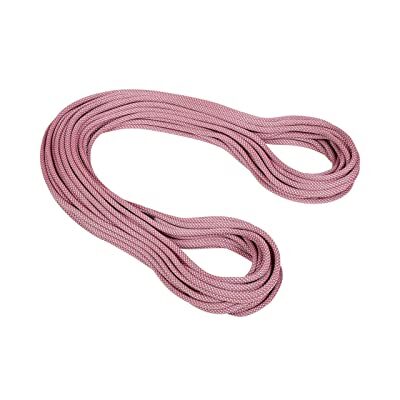
Quickdraws are a sport climber’s favorite piece of gear because they allow you to connect your rope to the bolted protection anchors on a climb. Quickdraws come in all shapes and sizes, so we recommend an affordable set of wire gate quickdraws to get you started.
Our pick: Black Diamond Freewire
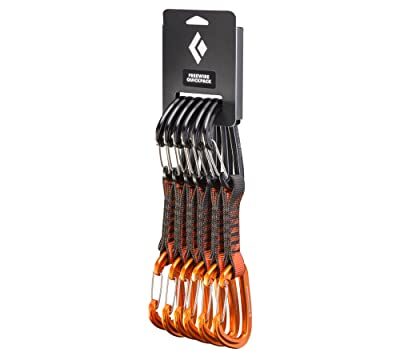
Locking Carabiners are a great way to connect yourself to an anchor during a climb. They’re also vital for belaying, rappelling, and any other situation where the opening of a carabiner would be catastrophic. In the beginning, start with some affordable, simple locking carabiners, mostly in the off-set D shape, and diversify as you get more experience.
Our Pick: DMM Phantom Screw Gate
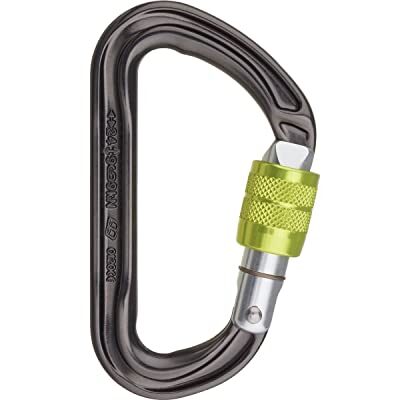
Non-Locking Carabiners are a climber’s bread and butter. They are used for nearly everything, from attaching cams to a rope to clipping your gloves to your harness. These days, there are some super expensive non-locking carabiners, so keep things modest in the beginning. Many of the super light and featured carabiners won’t make a difference to you until you’re pushing really hard grades or climbing in very remote places.
Our Pick: Black Diamond Neutrino Rackpack
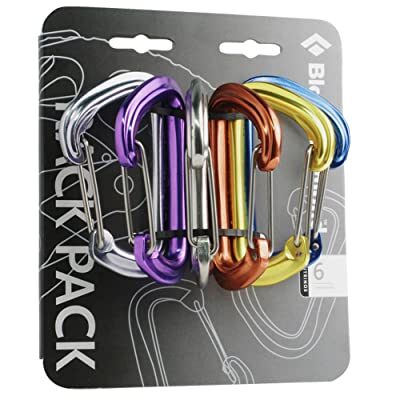
A personal anchor system is a great way to attach yourself to an anchor during a climb. They can be used to extend a rappel, too, so they’re super versatile. Although you could just use a sling, a personal anchor system is purpose-built and more durable over time.
Our Pick: Metolius Alpine PAS
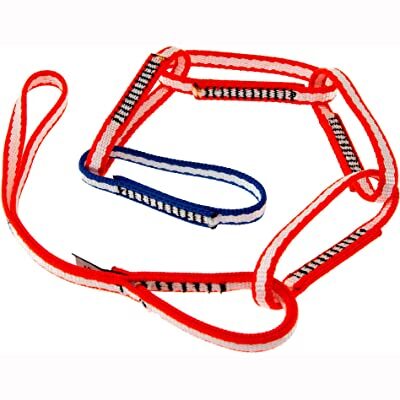
Although you probably already have a belay device, intermediate climbers should consider investing in one that has a few more features. Devices, such as the ATC guide, that can be used in “guide mode” are great for multi-pitch climbs, while GriGris are perfect for belaying top-rope climbers, sport climbers, and for doing certain rope rescue techniques.
Our Pick 1 : Petzl Grigri 2 Belay Device
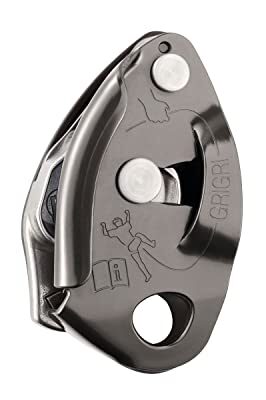
Our Pick 2 : Black Diamond ATC-Guide Belay Device
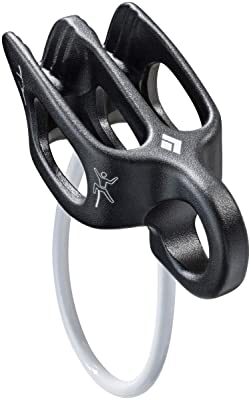
Once you start spending more time on multi-pitch and trad climbs, you’ll need to round out your climbing gear with some specialized kit. In addition to all of the previously mentioned items, you’ll want to invest in the following as an expert climber:
Cams
Cams are the go-to climbing protection for even-sided and flaring cracks. Although they’re expensive, they’re a staple of any modern-day climbing rack, so they’re a must-have for expert climbers.
Our Pick: Black Diamond C4
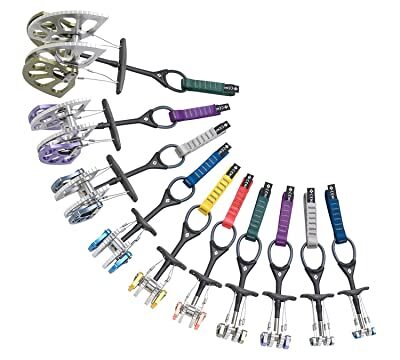
Nuts are lightweight and simple pieces of gear that can be used to protect you as you climb. They take some practice to place, but they fit perfectly into constrictions and narrowing cracks on trad climbs.
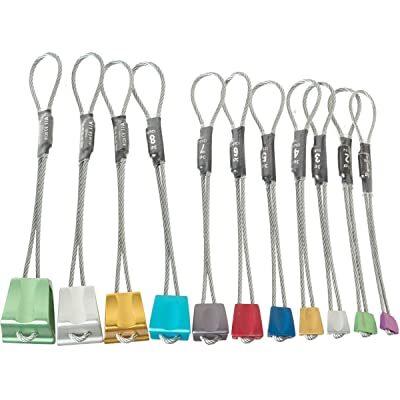
Sewn slings and runners are great for attaching your rope to your gear on wandering climbs. They can also be used to attach yourself to an anchor, to make an anchor, or in rope rescue situations. Nylon and Dyneema slings are the most popular, with Dyneema being lighter, yet more expensive.
Our Pick: Black Diamond Nylon Slings

Kids can climb, too! In fact, they often love it. While buying gear for kids may seem like a money pit, since they grow so quickly, your kid will need a few things to get started in their climbing career. Here’s what they need:
Climbing Shoes
While a kid can just climb in their sneakers, if your child is getting serious about climbing, it’s worth investing in a pair of proper climbing shoes. Thankfully, some companies make kid’s climbing shoes that expand to accommodate a range of sizes.
Our Pick: La Sportiva Kids Stickit

If your kid wants to top-rope or eventually sport climb, they’ll need a harness. There are a few different styles to choose from – either a “sit” harness or a “full-body” harness. Full-body harnesses are the go-to for smaller children who don’t have well-defined hips as it keeps them secure in the harness, should they flip upside down. Older kids with more body mass can sometimes use a “sit” harness, though most pre-pubescent kids should probably be in a full-body harness.
Our Pick 1: Black Diamond Momentum Climbing Harness – Kid’s

Our Pick 2: Black Diamond Momentum Full Body Harness – Kid’s

A kid’s noggin is worth protecting, so you’ll want to make sure they’re wearing a helmet when you’re climbing outside. Most kid’s climbing helmets are sized for their heads and even have great patterns and designs.
Our Pick: Edelrid Shield II Kids

Although the general public thinks that all climbers are alike, there are actually many different kinds of climbing, each with their own specific gear needs. Here’s some advice on what gear you might need for the different disciplines of climbing:
Traditional, or “trad,” climbing is a gear-intensive enterprise. If you’re going to invest in a trad climbing rack, you’ll want the following gear:
- Climbing shoes
- Climbing harness
- Climbing helmet
- Chalk bag
- Belay device
- Climbing rope
- Personal anchor system
- Locking carabiners
- Non-locking (wire-gate) carabiners
- Single and double-length slings
- Cordallettes
- Full rack of cams
- Full rack of nuts
If you spend most of your time climbing indoors, you won’t need to get very much gear. Thankfully, climbing indoors is one of the most accessible ways to get into the sport. Here are some things you’ll need to climb indoors:
- Climbing shoes
- Climbing harness
- Chalk bag
- Belay device
- Climbing rope (if leading)
Would you rather tackle super difficult problems on boulders than rack up for a multi-pitch climb? Then, you’ll need some specialized gear. Here’s what you should have for a day of bouldering:
- Climbing shoes
- Chalk bag
- Chalk brush
- Crashpad
Sport climbing combines all of the fun of lead climbing and outdoor climbing, without all of the gear of trad climbing. But, you’ll still need certain pieces of gear to get you off the ground. Here’s what you need:
- Climbing shoes
- Climbing harness
- Climbing helmet
- Chalk bag
- Belay device (Gri-Gri is great for this)
- Personal anchor system
- Quickdraws (12 or more)
- Climbing rope
Mountaineering is a great way to experience the beauty of the mountains through climbing. Thankfully, while mountaineering requires a lot of gear, you can use a whole lot of your rock climbing gear when you’re in the mountains. You’ll need at least the following for a mountaineering trip:
- Mountaineering boots
- Climbing harness
- Climbing helmet
- Belay device (not a GriGri)
- Climbing rope
- Personal anchor system
- Locking carabiners
- Non-locking (wire-gate) carabiners
- Single and double-length slings
- Cordallettes
- Full rack of cams
- Full rack of nuts
- Ice screws
- Snow pickets/flukes
- Ice axe (one or two)
- Crampons
- Personal camping gear (if going on an overnight trip)
If you love climbing and don’t want to stop going outside in the winter months, you’ll want to get into ice climbing. Ice climbing is a fantastic way to enjoy the colder season while still getting out into the vertical world. Here’s what you’ll need:
- Mountaineering boots
- Ice climbing crampons
- Ice tools
- Ice climbing gloves
- Climbing helmet
- Climbing harness
- Ice screws
- Trad protection (depending on the route)
- Climbing rope (dry treated)
- Personal anchor system
- Locking carabiners
- Non-locking (wire-gate) carabiners
- Single and double-length slings
- Cordallettes
- V-thread tool
Once you have all of your climbing gear, it’s time to get head outside. But, with all that gear to manage, it can be difficult to find a way to organize and pack it all for a day of climbing. Here are some of our top tips for packing and organizing your climbing gear.
Organize With Gear Slings
One of the most overwhelming things is looking at a pile of gear that’s horribly unorganized. A useful way to keep things tidy and in order is to organize your gear using gear slings. You can choose to buy a purpose-built model if you actually like to climb with these, or you can just organize all of your gear onto regular sewn nylon runners.
Once you have a few gear slings, you can start to organize your kit. A nice way to do this is to dedicate one sling to trad protection, like cams and nuts, and another to your slings, runners, and excess carabiners. Doing so makes it easy to quickly find a piece of gear without having to search through a pack.
Get Some Plastic Bins
Unless you’re lucky enough to have a large gear storage room where you can put up a pegboard to rack all of your gear, you’ll need to find some other way to keep your stuff safe and clean, wherever you call home. Large plastic storage bins can make storing outdoor gear a simple task.
If you get a few plastic bins, you can put all of your trad climbing gear in one, your ice climbing and mountaineering gear in another, and your hiking stuff in a separate one. Be sure to label your boxes so you can easily find which one contains the gear you need!
Have a Quiver of Backpacks
Depending on what kind of climbing you do, you’ll want a selection of different backpacks to transport your gear to your climbing site. If you’re a mountaineer, you’ll want something with ice axe loops and perhaps a crampon pouch, while a sport climber might prefer a simpler pack with a sling for easily attaching a set of quickdraws.
Instead of trying to find a one size fits all pack, you’ll eventually want to start working your way toward having a pack for all of your different adventures.
Your climbing gear can, quite literally, save your life, so it behooves you to take good care of it. That being said, climbing gear maintenance is a fairly misunderstood practice, so let’s go over some basics here:
Inspect Your Gear After Every Climbing Trip
At the end of every climbing day, you should quickly take a look at your gear as you re-rack it onto your storage gear slings. Pay particular attention to slings and “soft goods” as these need to be replaced more often than metal “hard goods.” Keep an eye out for signs of wear and tear or any obvious signs of damage. If you find anything concerning, set it aside and consult the manufacturer.
Wash Your Rope Frequently
An often overlooked practice is that of rope washing. Especially if you spend time climbing outdoors in particularly muddy or dusty locales, you’ll want to regularly wash your rope. This is usually as simple as getting a rope brush, a hose/faucet, and running the rope through the brush to rid it of any dirt. Then, hang the rope up (not in the sun) and wait for it to dry. You don’t need to wash your rope with soap (not recommended, anyway), especially if you rinse it out regularly.
Store Your Gear in a Cool, Dark, Dry Place
“Soft goods,” like slings and ropes, are particularly susceptible to damage if they’re left in the sun. The UV rays from the sun can damage the fibers in these pieces of gear and cause them to fail with surprisingly low loads. Thus, you’ll want to make sure your gear is always stored in a cool, dark, dry place, away from direct sunlight.
Keep Your Gear Away From Corrosive Substances
Soft goods can be harmed by certain corrosive substances, such as sulfuric (battery) acid, bleach, solvents, and even urine. Keeping your gear stored in large plastic bins can help reduce the risk of exposure, but if you think there’s a chance that your gear came in contact with a corrosive substance, don’t use it! It’s not worth your life.
Always Let Wet Gear Dry Out
Packing away wet gear for storage is a great way to ensure that you grow mold all over your expensive climbing gear. Not only is that gross and unsanitary, it could be damaging to some of your soft goods. Do yourself a favor and always let your gear dry out (not in the sun!) before packing it away. A garage with a fan is a great place to dry climbing gear.
Many people wonder if and when they should retire their climbing gear but few know where to go to find the answer. These days, everyone seems to have an opinion on when you should retire your gear, with some people taking a very conservative approach (get new gear every few years) and others opting to never replace their gear to save money.
When to Retire Slings, Ropes, and Harnesses?
Ultimately, you should ALWAYS follow the manufacturer’s guidelines for when to retire gear. For the most part, “soft goods” should be retired after:
- 1 year, if used nearly every day
- 2-3 years, if used frequently (think: weekend warriors)
- 5 years, if used infrequently
- 10 years if sitting in the original plastic wrapping on a shelf
Since soft goods break down and lose their strength over time, it’s imperative that we replace them according to these guidelines. However, if you notice abnormal wear and tear on your gear (e.g., core shot ropes, cut/ripped slings, excessively fuzzy rope sheaths), replace them immediately! Saving money isn’t worth your life.
When to Retire Climbing Hardware?
When it comes to metal goods, however, the general consensus is that they only need to be replaced when they show abnormal signs of wear. This is fairly common on belay devices (especially GriGris that are used a lot) and carabiners. Often, you’ll notice that the metal has been worn down on a particular surface of the belay device or carabiner, which is a sure sign that you should replace it.
When to Retire Gear Made of Metal and Soft Goods?
All of this advice is great, we know, but what about gear that’s both metal and soft goods, like a cam? Well, when it comes to cams, the metal camming device itself is usually just fine, but you’ll find that you often need to replace two things: the trigger wires and the slings.
You’ll know you need to replace a cam trigger wire when the wire no longer functions and retracts the cam lobes, which happens when the wire gets cut or damaged. You can often replace the wire yourself with an at-home kit from your gear manufacturer, or you can send your cams in for replacement.
When it comes to your cam slings, you’ll almost certainly need to send them in every few years for a replacement. Since these slings need to be bar-tacked on with an industrial sewing machine, your best bet is to send them into the manufacturer. Most companies offer a re-slinging service at a reasonable charge, but be prepared to wait a while if you send your cams in during the off-season winter months!
Once you have all of your shiny new gear, you’ll want to ensure that your gear doesn’t get mixed up with someone else’s. One of the best ways to do this is to mark your gear with some sort of colorful label to help you tell it apart from another person’s. Since many people have the same cams, carabiners, and slings, marking your gear can be critical to ensuring that you go home with your gear at the end of the day.
If you want to mark your gear, you have a few options. One of the original methods was to use colorful nail polish (glitter is always a good choice) to mark the stems of cams and the long edge of a carabiner, though the jury’s still out as to whether or not this is harmful to soft goods. Nail polish does tend to scratch off after a while, though, so you may need to reapply after a while.
Another popular option is to use electrical tape in various colors. If you cut pieces of electrical tape and wrap it around your cam stems, carabiners, and slings, it’s fairly easy to identify what gear is yours. You can even buy purpose-built “rack tags” from Trango that make marking your gear a no-brainer.
Last but not least, if you’re planning to have a perfect climbing trip, the best camping tent is also a must have gear, you can check out everything related to camping tents for your needs as below:
Ultimately, gear is critical to any good climbing adventure. Without the right gear, you’ll find it difficult, if not impossible to protect yourself while climbing. So, before you head out for a day at the gym, a weekend at the crag, or an epic in the mountains, be sure to equip yourself with the best gear. Happy climbing!

A professional mountain guide and experienced outdoor educator, Gaby enjoys traveling and exploring the world’s most remote locales. As a writer and editor, Gaby has written for a variety of climbing and travel blogs, news sites, and climbing magazines. She is currently finishing a master’s degree in outdoor education but in her free time, Gaby loves a strong cup of coffee and searching for the next great adventure.